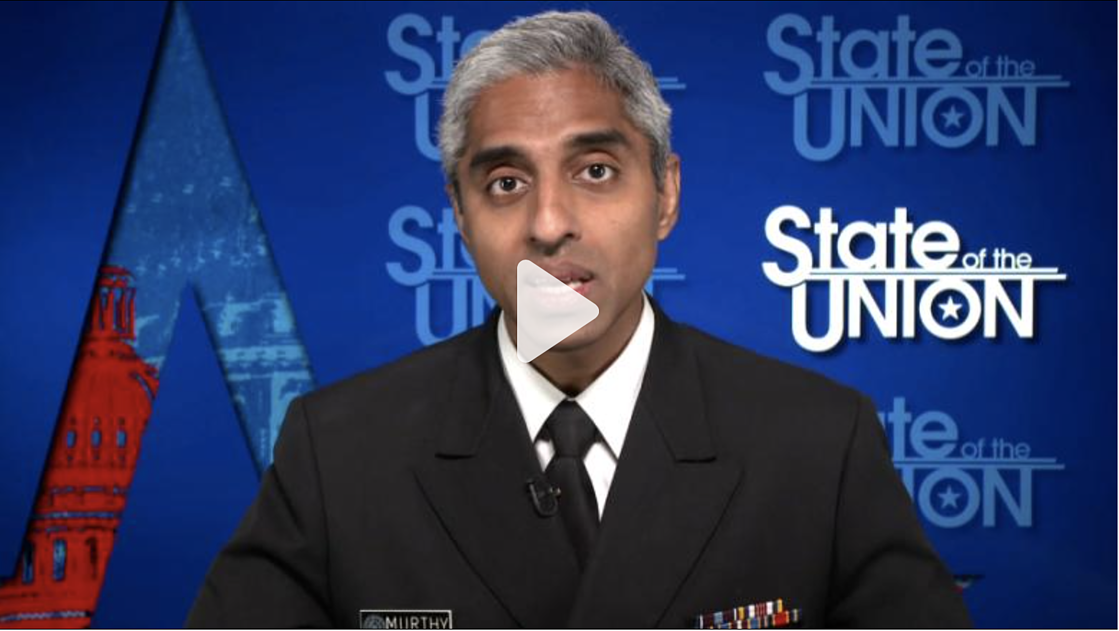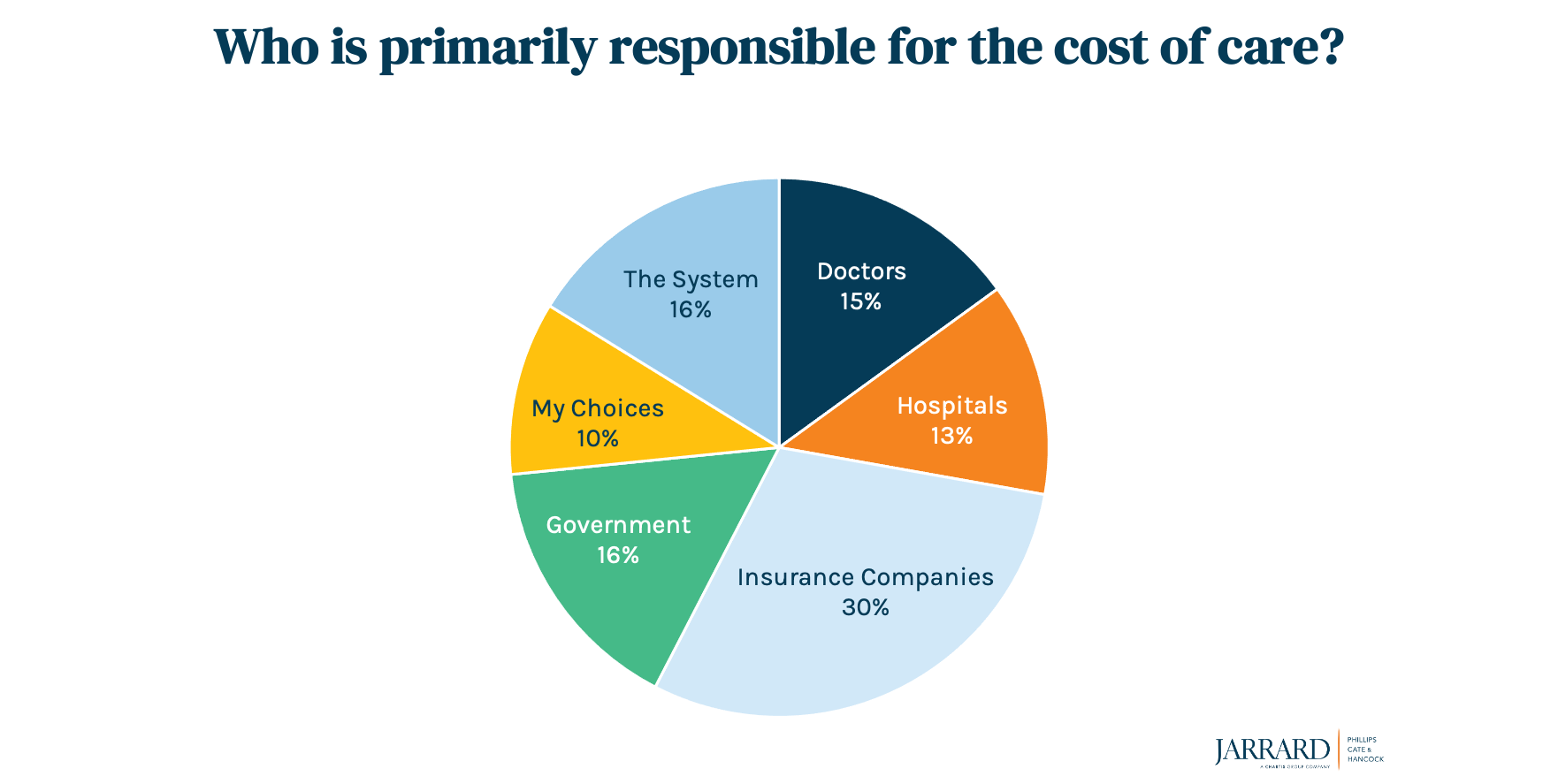
Note: This piece was originally published over the weekend in our Sunday newsletter. Want content like this delivered to your inbox before it hits our blog? Subscribe here.
Healthcare workers are leaving.
They’re citing burnout, stress, safety, moral harm – and in some cases a desire for “personal freedom” over all else. They’re answering the question, “Is it worth it?” with a decisive, “No.”
Many are leaving because they cannot spend another day watching patient after patient die unnecessarily. Others have decided their career isn’t worth the vaccine. Logs on that particular fire? President Biden’s new mandate for large employers that will force even more people to make a choice. All told, the consequences for healthcare are severe – moral injury for healthcare workers, frightening staff shortages for providers and the public and long-term questions that will likely affect how all of us receive care.
Our latest Special Report homes in on the massively complex problem of clinician burnout. It’s a big read with some strong takeaways – definitely worth taking 15 minutes to digest.
Meanwhile, for a fascinating behind-the-curtain look at how doctors and nurses are expressing their burnout online, check out our Q&A below with Dean Browell. He’s a digital ethnographer and principal at Feedback, a social listening firm that digs into how what we say in the digital realm translates into how we behave in the physical world. And, he’s been tracking the issue of burnout among the healthcare workforce for years.
The Genie’s Out of the Bottle: What Clinicians Are Really Saying Online
(Five-minute read)
Jarrard Inc.: You’ve been tracking burnout in the healthcare workforce for years. Give us a bit of the back story.
Dean Browell: There’s been two different arcs with nurses and physicians, which have developed a little differently over the past 18 months.

Browell
Starting with nurses, about this time last year there was a larger burnout effect that in some ways was getting stoked by the heroes messaging that was finally starting to get a little stale. The pushback started with nurses, who are the most vocal group in healthcare, maybe even more than patients. They have their own message boards and have for years. They had some of the first Facebook groups because they all had .edu email addresses.
This time last year there was this perception that all of healthcare was being treated the same publicly, but in those groups, nurses were asking whether it really was the same to work in one organization or the other. For providers this meant that nurses considering a move represented an opportunity to attract and retain or a threat that the grass might be greener somewhere else.
Jarrard: What are the nurses expressing today?
DB: There’s more outright discussion that, “Maybe this entire industry isn’t for me.” What was first anger towards a larger or more nebulous idea – like administrators or how people are handling things on a macro level – is now towards the patient. Before, it was being angry at the virus and potentially how your hospital handled something. Today people are wondering if they can continue and serve a public that is, in their mind, willingly putting themselves at risk and creating this situation. It’s a very different burnout. And it’s a much harder equation from a retention and a recruitment standpoint for providers.
Jarrard: How are nurses talking about those concerns?
DB: In the beginning, nurses often had two distinct online personalities. There’s the online personality of “capital N” Nurse in front of everyone on Facebook versus on the American Nurses Association message board where they’re talking amongst themselves. Last year, those two faces began to collide. What we saw for the first time last fall was nurses on Facebook talking about union meetings. Typically, that would be relegated to the nurse message boards or discreet groups. We saw nurses not just take the platitudes about heroes and say, “Thank you. It’s been a lot. We have to push through this” like they did last summer. Instead, suddenly, you had them openly criticizing things they normally never would have discussed with their public-facing persona.
Jarrard: What’s the background on physicians?
DB: Usually what we saw is that physicians would pop up every now and then during a career change asking about the schools or nightlife in a particular city they were considering. “Hey, I’m thinking about moving to the city, what’s the orthopedic scene like?”
In August of last year, though, we saw physicians poking their heads up for the first time with the general public. They were offering their own statements and being a bit more forward with their own name at stake. That was different. And we saw this happening in some unusual places like threads of Reddit – that almost never happened before.
Jarrard: Same question – where are physicians today?
DB: They stepped out last August and they’ve stayed out in the public square since then. Now, like nurses, we’re seeing that they’re not just saying, “Hey, I have a stake in this, and I’m trying to help you navigate misinformation.” It’s not just a benign educational leadership approach like it would have been a year ago. Now it’s taken on an angrier or more exasperated tone that we haven’t heard out loud.
Jarrard: Nurses and doctors are coming from different professional and financial statuses. Does that affect how they’re able to respond?
DB: It manifests in the freedom to talk in a certain way. The physician discussion we’ve seen has still been very high level. “Here’s my take on what’s happening” as if they’re giving a comprehensive analysis of the moment. Contrast that with the nurse that says, “I just took my first break in eight hours.” Physicians take more of a punditry angle, whereas the nurses’ perspective is more in the moment.
Jarrard: Is this shift in tone and the level of engagement permanent or will it recede?
DB: For the most part I expect the physicians-as-pundits to eventually fade. Their level of connection online may stay, they may reappear when there’s something big they want to speak their mind about. But from a day-to-day perspective I’d expect that genie to go back into the bottle.
On the nurse side, I doubt the genie that will go back in the bottle – because of how open nurses are being today – is this idea of the two personas. There’s the happy-go-lucky, “I love that I’m in healthcare!” and “Here’s why I’m a nurse,” that is presented to family and friends, versus what they were saying in private among peers. You can’t unwind that clock now that they’ve been this exasperated publicly.
Jarrard: What does it all mean for the healthcare workforce going forward?
DB: This will have a freezing effect of some sort. It’ll be fascinating to watch enrollment in nursing programs. It was on a fast track for the last three years in order to meet the demands. We do a lot in higher education and there are some robust nursing programs having trouble meeting their enrollment numbers.
The question is turning into, “Who do you want to do this for?” And the feelings of betrayal and burnout change that conversation. I think it’ll have a freezing effect on the creation of a new nurse population.
Jarrard: We’re also seeing indications that people at the other end of their career are getting out. What does the situation you’ve described mean for them?
DB: It’s how many people leave the industry completely and how many leave the center of the industry. It’s people saying, “I’m going to find a nice, quiet CVS somewhere.” There’s this idea of decentralization of demand for healthcare services where it’s coming out of the hospitals and moving to those outer rings. It’s dangerous for hospitals because there was already attrition due to these alternative models. But now and over the next 18 months the threat is greater with people looking to leave completely or say, “How about I just not stand in the center of the storm?”
Jarrard: How can healthcare providers respond to this shift?
DB: Health systems have an opportunity to do better because of their sheer size. They can talk about what it’s like to work for the system in different roles. People will gripe about robbing Peter to pay Paul, but showcasing lateral movements that improve quality of life is one way that systems can cope.
Jarrard: What about smaller hospitals?
DB: Community hospitals will be the hardest hit because there’s almost no lateral movement available. For them, it will be about improving the situation. Maybe it’s investment in telehealth or to try and not be so ER-focused to remove some of that constant pressure. But it’s not an easy solution.
Jarrard: Last category: What’s the approach for those non-traditional or health services providers that aren’t in the center of the storm?
DB: We just finished a study for an orthopedic group that’s branching out towards a major metro area where they’ll be competing with some big systems. They’re going to have a fantastic story because they can recruit nurses who are desperate to get out of the ER by showing them what it’s like in an ortho urgent care by comparison. For these specialty practices it’s saying, “Hey, stay in nursing but come out of the storm.”
Jarrard: One of the consistent themes in our interviews is that it’s not about the money, but money is a major factor. Where does compensation come into all of this?
DB: Something that hasn’t come to healthcare is the concept of hazard pay. Of all industries you’d think it would be there for healthcare. That may start to happen, especially in systems that can only offer so much lateral movement. Maybe it comes into play between telehealth and in-person care in the ER or trauma.
Jarrard: Anything else? What are we missing?
DB: We may see an effect on M&A, too. If a system is looking at three different hospitals with similar profiles but one is an absolute powder keg in terms of its workforce, that would probably make it very easy to choose a different acquisition. It’s a different metric than most systems have looked at in the past. The focus has been on heads in beds. But looking at the distressed asset from the workforce standpoint will change the game a bit. The question will be, “What can our system sustain in terms of volatility, whether it’s attitude or behavior? Can we repair the culture or, even though it makes sense on paper, should we walk away because it will never fit?”















